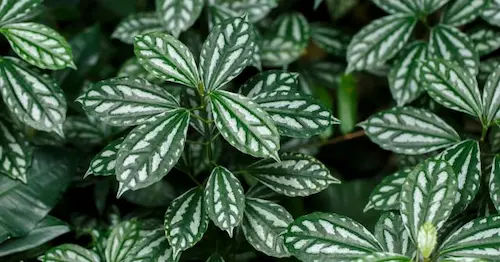Fittonia Care Singapore

Its brilliant patterned leaves and its green foliage, make the Fittonia (also known as ‘nerve plant’ or ‘mosaic plant’) a popular houseplant, flourishing in damp Singapore.
As tropical beauties from the moist rainforests of South America, they have been imported and made their way throughout the island’s homes, offices and gardens.
Learn how to troubleshoot issues like leaf yellowing, limp leaves, and pests to keep your Fittonias healthy and vibrant.
This best Fittonia care in Singapore for 2025 guide provides essential care information for your Fittonia, maintaining its beauty in your indoor garden.
From watering habits to light requirements, we’ve got all you need to know about watering, light and more to take care of your Fittonia as the gardening pro you’ve always wanted to be!
Quick Summary
- Fittonia plants (‘nerve plants’) are popular in Singapore for their variegated leaves and indoor-friendliness.
- Learn some expert tips for Fittonia care in Singapore (lighting, watering, feeding, growth, temperature, pests), here.
- Learn how to pinpoint and address common issues like leaf yellowing and pest attacks to keep your Fittonias vibrant and happy.
Understanding Fittonia Plants

Fittonias are stunning foliage plants, with complex patterns of its contrasting veins, rich colours, interesting small, and oval leaves.
In Singapore, we see varieties such as Fittonia verschaffeltii, Fittonia albivenis and Fittonia argyroneura, each with their own distinctive colours and patterns.
Benefits of Growing Fittonia Plants Indoors

If you’re ever looking for a beautiful plant that adds to both your living space and your wellbeing, growing indoor Fittonias is a great way to go!
Below, find five ways growing Fittonias can have a positive impact on your life.
- Air Purification: Having a fittonia plant at home helps filter pollutants in the air – which means healthier indoor air and a more refreshed living space.
- Enhanced Mood: Their bright foliage has been known to uplift the mood, making you feel happier and healthier.
- Low Maintenance: Fittonias take little time to care for, making them suitable even for gardening novices or for people with limited time (as many of us do), thriving with indirect light and regular (though modest) watering.
- Humidity Love: These are the plants that will flourish in high humidity that might plague your indoor climate, especially in a bathroom or kitchen. They’ll help you find a balance.
- Visual Appeal: Thanks to their striking vein patterns and range of colourations in their foliage, Fittonias become a simple yet striking addition to any indoor space or even as a ground cover. They add living, tropical beauty.
Essential Care Guidelines for Fittonia in Singapore

- Light and Temperature: Fittonia prefers bright, indirect light and make an excellent choice for indoor areas with filtered sunlight. In Singapore’s climate, they should be shielded from hot, direct sunlight which may scorch the leaves. Keep temperatures between 65-75°F (18-24°C), keeping them away from cold drafts.
- Watering and Soil: Keep Fittonia soil constantly moist, never waterlogged to prevent root rot. Water only when top 2-3cm of soil is dry, with good drainage. Use potting mix with lots of organic matter to enhance drainage and prevent waterlogging.
- Feeding and Fertilizing: Feed every 4-6 weeks from spring to summer with diluted balanced liquid fertiliser. Do not overfertilise as this will cause salt buildup, and stop feeding for the fall and winter.
- Pruning and Propagation: Trim to shape and keep bushy. Cut dead leaves to promote new growth. Propagate through stem cuttings: cut below a node, remove lower leaves and root in moist soil or water.
Troubleshooting Common Fittonia Issues in Singapore
Identifying signs of stress or disease in Fittonias
.webp/tr:w-500)
Watch out for the usual problems of Fittonias in Singapore, such as:
- Leaf yellowing: Could indicate overwatering, underwatering, or nutrient deficiencies.
- Leaf wilting: May be a sign of underwatering or overheating or sunburn.
- Pests: Special care may be required to remove Aphids, spider mites or mealybugs if they move in and multiply unchecked.
Effective solutions for common Fittonia problems

And if you see any other signs of stress or sickness in your Fittonias, feel free to nip them in the bud. Here are some fixes for common problems:
- Adjust watering: If the leaves on your Fittonia are turning yellow or starting to wilt, then alter your watering regime to provide the right amount of moisture.
- Monitor humidity: Mist the leaves or place a humidifier nearby to increase humidity around your Fittonias.
- Treat pests: Use natural or chemical based insecticides to prevent infestations and avoid causing more damage to the plant.
Dealing with pest infestations or fungal issues
.webp/tr:w-500)
It’s crucial to resort to an effective and safe treatment to protect Fittonias against pest or fungal problems: avoid using toxic products that might compromise the integrity of the two or damage human health.
Rather, you can try to go natural or reach out to a gardener as they may have practical resources for sustainable pest management.
Fittonia Care Singapore
Maintaining lush Fittonias indoors can enhance your home’s beauty and air quality.
With this detailed instruction, continue to follow expert care tips, and know how often you should water and what kind of light balance your succulent needs, also in detail with the most common pests.
Let your healthy Fittonias thrive in Singapore’s indoor environment. Happy gardening!
Check out our related articles below:
- Ultimate Guide To Building A Closed Terrarium Singapore (2025)
- Ultimate Moss Terrarium Singapore Guide (2025)
- Ultimate Succulent Terrarium Singapore Guide (2025)
Frequently Asked Questions (FAQ)
If you have any questions about fittonias in Singapore, you can refer to the frequently asked questions (FAQ) about Fittonia Care Guide In Singapore below:
What type of environment do Nerve plants thrive in?
These small-leaved plants are tropical and therefore need humidity, and a bright, indirect light source, which mimics the filtering canopy under which they’d normally grow in their native rainforests.
As a result, fittonias are a pretty popular choice of plant to grow indoors, placed in hanging baskets, or in terrariums in Singapore.
How should I water my Fittonia plant to keep it healthy?
As for fittonias, their general rule of thumb for watering is to apply frequent misting that constantly keeps the soil moist or near-moist but not soggy.
Ideally, a well-draining soil mix is deployed to avoid waterlogging the roots.
The top 50 per cent of the soil should dry off before the plant gets watered again.
Terrarium plants need good drainage in the soil or containers with an open top, or else they should be placed in a closed terrarium to maintain the humidity.
How do I ensure the best growth for my Fittonia in terms of sunlight?
Fittonia like bright, indirect light, like you would find in the shade of the forest canopy.
So, don’t place your Fittonia in a spot with direct sun, which will scorch the leaves.
Put your Fittonia in a location near a south- or east-facing window with plenty of bright, indirect window light, or use a sheer curtain to diffuse the light coming in from a south-facing window.
What are some tips for maintaining the health of my Fittonia plant?
In Fittonia, keep your plant happy by giving it fresh soil that supplies adequate nutrients and drainage.
If pests show up, neem oil is an organic solution to keep your plant healthy without harsh chemicals.
Checking on your plant for signs of stress (such as wilting or discolouration) can also help you tweak your care routines, such as watering or positioning, to relieve that stress.



